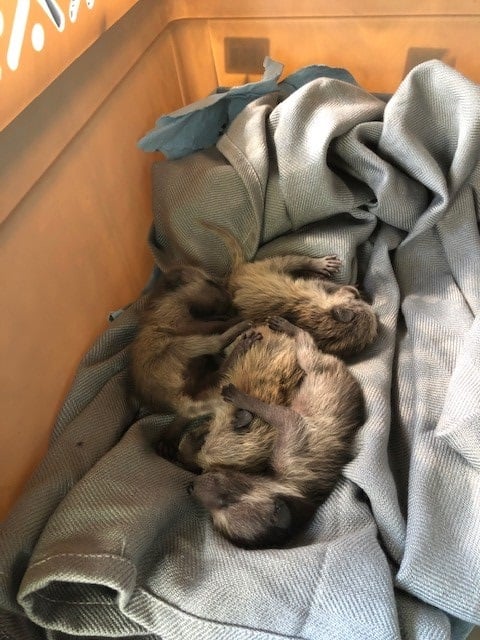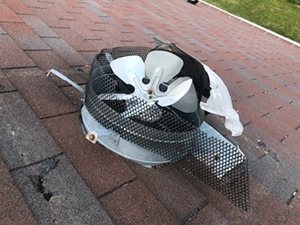Raccoons are ever recognizable with their black-masked face and nocturnal habits. The natural habitat for raccoons is wooded areas close to water. Hollow trees are the natural den sites for raccoons. But they have adapted to the urban and suburban habitats in New Jersey.
Raccoons are on your property (either in your yard or your house) in search for food and shelter. Easily available food often attracts raccoons to your yard. Raccoons are omnivorous, eating both plants and animals. Plant foods include fruits, berries, nuts, acorns, corn, and other types of grain. Raccoons will den in the space under a porch or deck, inside sheds, climb into chimneys, or in your attic.
Female raccoons may destroy and enter parts of your home, especially your attic, in order to create a suitable place to raise their young. Raccoons usually mate between late January and mid-March. New Jersey homeowners start to notice a raccoon litter in April or May.
Most people know raccoons are carriers of rabies, which can be deadly to people and pets. Raccoons are dangerous because they can spread other diseases, destroy your home, and potentially attack. Do not approach a raccoon inside your attic!
How Critter Control of New Jersey Gets Rid of Raccoons
Critter Control has been providing raccoon removal throughout New Jersey for decades. Our technicians have the experience and training to recognize all potential raccoon entry points and damage cause by a raccoon. Based on the comprehrensives inspection, our raccoon removal process safely traps and removes the animal and repairs all damage.
Raccoon Trapping

A cage trap is the most effective and humane raccoon trap. Keep 12 inches around the trap clear. Raccoons have extremely dexterous front paws with five long, tapered fingers and long nails. Raccoons destroy everything they can get their hands on when trapped.
Place your live trap in areas where you see signs of raccoon activity. Inside your home look for signs of tracks or paw prints and raccoon droppings. Outside of your home, look for raccoon droppings, dens, or animal runways. Setting multiple traps in different locations along their pathways can yield better results.
Secure the trap and protect the animal. If you set a trap on the roof, make sure it is secure! Unless the trap can be stabilized, it is not safe for a raccoon to be in a trap on a pitched roof. You should use a trap that has some covering to protect the animal from the elements.
Bait the trap with sweet items to reduce non-target captures. You can purchase sweet pasts. Fruits like cherries or grapes, marshmallows or jelly work effectively as raccoon bait.
Direct capture is not commonly used because raccoons are a rabies vector species. If legal, a healthy trapped raccoon will be relocated with written permission. When babies are removed from an attic, our wildlife specialists seek help from a local wildlife rehabilitation center.
Raccoon Control & Exclusion
Preventative exclusion services are the most effective raccoon control. After raccoon removal, it is imperative to seal all entry points to prevent future entry. Ensuring you don’t create a home for raccoons outside your property will also help prevent attracting raccoons. However, habitat modification will become very important for prevention after dealing with a raccoon invasion. Repellents offer temporary solutions. Raccoons grow accustomed to frightening devices, and there are no toxicants regulated for raccoons.
